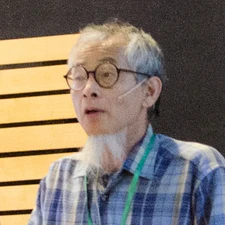Masatoshi Yamauchi

The 2019 Julius Bartels Medal is awarded to Masatoshi Yamauchi for extraordinary work in space physics and planetary science.
Masatoshi Yamauchi is a truly international scientist. He has worked in Japan, the US, and Sweden and is currently a senior scientist at the Swedish Institute of Space Physics in Kiruna. Yamauchi’s research interests range from solar-terrestrial physics, magnetospheric physics, atmospheric evolution, to exobiology, that has resulted in his inter- and cross-disciplinary work approach. This methodology has allowed him to cross-link areas in space physics with those in planetary science resulting in innovative research results.
One of Yamauchi’s key contributions to the scientific community is that he has increased our understanding of ion escape mechanisms from planetary upper atmospheres and ionospheres. He has done this by studying the solar wind interaction with both magnetised and non-magnetised planets. In particular, he studied how solar activity affects the induced atmospheric escape and how this can modify the composition of a planetary atmosphere, and thus help explain why some planets are habitable while others are not. Furthermore, he found a drastic change in the exosphere of Mars without significant changes in the solar wind suggesting the importance of internal processes. In regard to Earth’s magnetosphere Yamauchi has shown that the terrestrial ring current does not consist only of a population of energetic particles (> 10 keV), but it contains also low-energy (sub-keV) ions, thus demonstrating that the inner magnetosphere is much more complex and full of fine-scale structures than previously considered. Additionally, he identified different types of ions in the inner magnetosphere suggesting the presence of a new class of energy population in this region of the magnetosphere. These results, among many others, have resulted in Yamauchi being first author on 44 articles in refereed journals and monographs.
Yamauchi is known for his enthusiasm in his leading roles on several ESA mission proposals (lead scientist of NITRO [NItrogen Ion TRacing Observatory
], co-lead scientist of ESCAPE [European SpaceCraft for the study of Atmospheric Particle Escape]). His contribution to the scientific community includes also having roles such as principal investigator for the IRF (Swedish Institute of Space Physics) magnetometer and auroral all-sky camera in Abisko, Sweden, as well as co-investigator for several space-borne instruments. It should be highlighted that Yamauchi is a well-known figure at the EGU General Assembly and has been a main session convener each year from 2013 to 2018. During the years, he has presented numerous papers (oral, poster, PICO) either as main author or co-author. The dedication and perseverance that Yamauchi has displayed in his scientific career since receiving his PhD is truly inspirational. Indeed, he is a role model not only for aspiring scientists, but also for senior scientists.
Publication resulting from the medal
Yamauchi, M.: Terrestrial ion escape and relevant circulation in space, Ann. Geophys., 37, 1197–1222, https://doi.org/10.5194/angeo-37-1197-2019, 2019.
